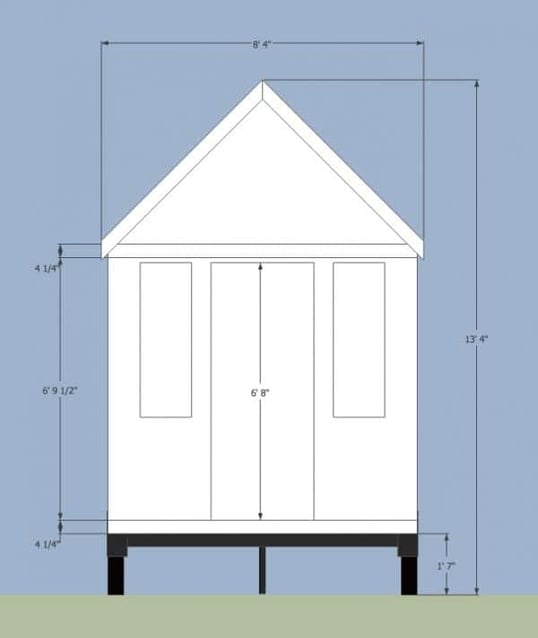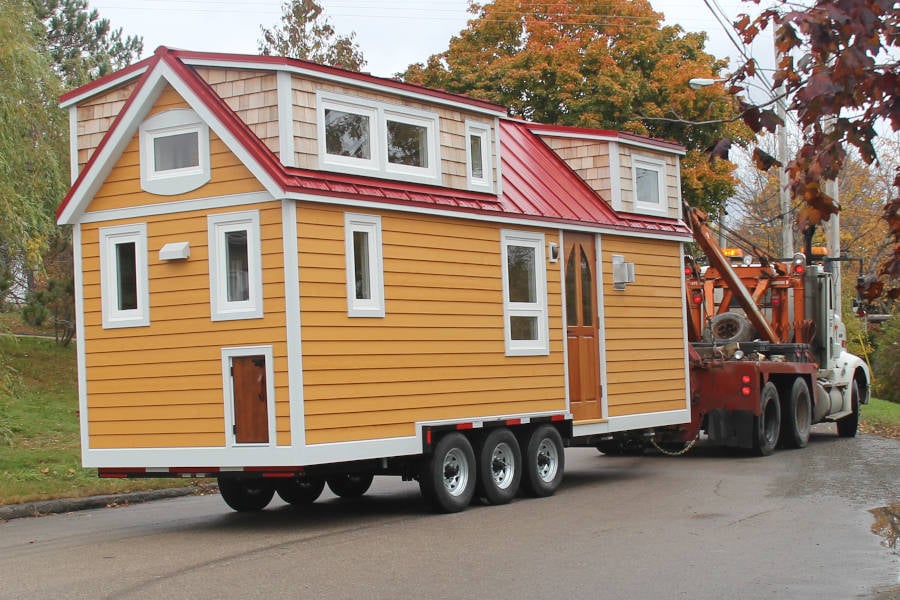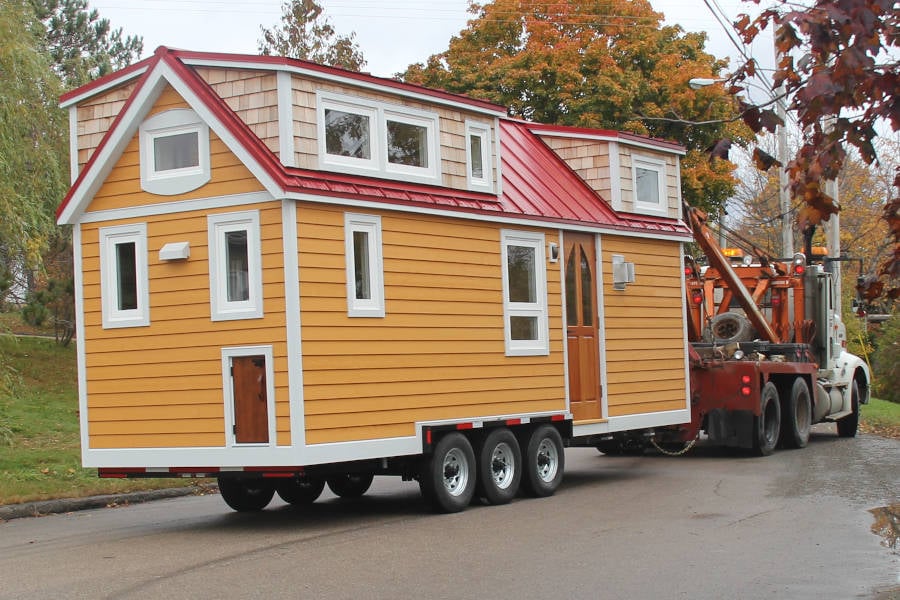So, how big CAN your tiny house on wheels be on the road? What is the Department of Transportation say about permittable sizes of tiny houses on wheels on the road?
Recently, Gold Heat sponsored the tinyhouse.com’s ONLINE GLOBAL TINY HOUSE CONFERENCE where CEO, Brian Bishop spoke about integrating radiant floor heat into a tiny home.
Gold Heat is no stranger to electric radiant floor heating in a motor coach or RV. That’s where Gold Heat got its start – the RV Industry! Gold Heat electric radiant floor heat mats can be found in today’s most lavish motorcoaches rolling across North America.
Like hitting the road in an RV, tiny homes on wheels have to abide by size restrictions while on the road. The truth is, tiny homes on wheels are in a grey area between traditional houses and travel trailers.

What is the best radiant floor heat for my tiny house?
Here is what Gold Heat learned about tiny houses on wheels, on the road.
Tiny House Maximum Size
But this scale of home is not entirely without limits. If you want to be able to pull your house down a highway without a special permit, it must conform to certain size limits. In most U.S. states this maximum size is 13.5-feet tall, 8.5-feet wide, and 40-feet long – 65-feet maximum including the tow vehicle. Extra care must be taken to squeeze the house into this semi-trailer-sized imaginary space.
Look at the image above. You can see why tiny houses have roof pitches that are no steeper and 12/12 (45-degrees) and walls that are a bit shorter than 8-feet. At first, the design challenge seems daunting, but as you browse through all the different homes people have built, you can see that there is still quite a bit you can do within the box.
Did you know…
If you want to be able to pull your house down a highway without a special permit, it must conform to certain size limits. In most U.S. states this maximum size is 13.5-feet tall, 8.5-feet wide, and 40-feet long – 65-feet maximum including the tow vehicle.
Tiny House Weight
Commercial travel trailers are designed to be lightweight and aerodynamic. Tiny houses are typically built from heavy building materials, like normal houses. This can make it much more comfortable to live in year-round but every foot in length adds-up and increases the requirements for the trailer and tow vehicle.
For example, a Tumbleweed Fencl is about 19-feet long and weighs just shy of 6,000 pounds empty. Add your belongings and you might start pushing 8,000 pounds. Now theoretically double the length to the 40-foot road limit – you could be talking about a house that weighs 16,000+ pounds, which would require a really big pickup to tow. This is not unthinkable of course, they build pickup trucks that can pull trailers that size; but it is an important consideration to make before committing to that scale.
Tiny House Design Size
Building tiny houses on trailers can provide a lot of flexibility and freedom; but like every design challenge, it doesn’t come without trade-offs. While you may not have to talk with building inspectors, you are your own to build a safe and strong home on your own.
It’s best to use building codes as guides and add extra reinforcement like earthquake and hurricane straps – after all the house will encounter 60 MPH winds and road vibrations. For some this may sound adversely challenging – to others, it sounds like music to their ears.
Did you know…
The best thing about having Gold Heat electric radiant floor heat mats installed under your flooring is that your heat source will never be affected by high winds or road vibrations. It’s silent heat that speaks loudly on your feet!
If you want more updates, check out the rest of our articles.





